|
|
 |
Canadian Historic Sites: Occasional Papers in Archaeology and History No. 16
The Cochrane Ranch
by William Naftel
The Capitalists
The Investment Climate
With the stimulus of active official encouragement, the stage had
been set for the inauguration of a ranching industry by the beginning of
the 1880s, but it frequently takes more than official interest to
initiate a new venture. What was needed was something more intangible to
create public enthusiasm and this was achieved as cattle ranching
reached the proportions of a minor fad among investors in Europe and
North America at precisely this time.
The reasons for this enthusiasm were varied. Some of it was due to
the glowing reports of North-West Mounted Police and travellers,
official and otherwise, who had passed through the grazing country and
who by word of mouth or in print had transmitted their enthusiasm to
others. They expounded upon the rich, nutritious grasses, the bracing
climate, the clear ever-flowing streams and the warm Chinooks. Lachlan
Kennedy, government surveyor of the Bow River District in 1881,
wrote
As regards the country extending from Belly River,
near Fort MacLeod, to Bow River, at Fort Calgary, I do not think too
much can be said in praise of its adaptability for stock-raising . . .
provided the winters prove as favourable as they are represented to
be.1
The interest of entrepreneurs was further heightened by rising beef
prices, and with the prospect of profit before them, they began to eye
the grasslands of the West. In the western United States the ranching
industry had reached maturity during the post-Civil War period. There
the cattle industry had had its beginnings in Texas in the years
immediately following the Civil War; discharged soldiers found that they
could round up longhorns in the southern part of that state, paying no
more than $3 or $4 a head, and drive them north to the upper Mississippi
valley where they sold for $40 a head. Scarcely had this market been
tapped than another opened up in Britain where prices for beef had
soared due to the ravages of disease among herds in Britain and on the
continent. Between 1877 and 1879 the export of beef on the hoof from the
United States increased almost threefold.2
Indicative of the often speculative nature of this interest was the
appearance of pamphlets such as that by General James F. Brisbin,
Beef Bonanza: or How to Get Rich on the Plains
(1881).3 In Canada, just on the threshold of western
development, a representative of a more responsible but nonetheless
glowingly optimistic type of propaganda is Professor John Macoun's,
Manitoba and the Great North-West. In a contribution to this
volume Alexander Begg, himself to become a leaseholder in the Northwest
and an enthusiastic advocate of the development of that whole country,
informed the reader that a small investment of $5,000 in cattle would
grow to $55,000 in as little as five years.4 Manitoba and the
Great North-West, a work which had a tremendous effect on
contemporary public opinion, devoted two chapters to the subject of
stock raising with particular reference to the Bow River district.
None of this escaped the notice of the British investor and in the
late 1870s the new cattle trade was talked about everywhere; in
Parliament, over the tea tables of the aristocracy and in the counting
houses. Few with spare capital to invest could fail to note that near
riots had occurred in Liverpool and Dublin when the populace attempted
to purchase the cheap imported meat. The Earl of Airlie, chairman of the
Scottish American Mortgage Company, toured the American West in 1881 and
on his return reported that it was not uncommon for a cattle breeder to
secure 80 to 100 per cent on his capital.5 Further
encouragement came from a more august source. The Marquis of Lorne,
following his vice-regal tour of the Northwest in the summer of 1881,
remarked that if he had his life to live over again he would be a
rancher in the Canadian Northwest, "God's Country" he called it. This
remark achieved wide circulation and proved to be an excellent
advertisement for the new country and the new industry.6
The Principals
One of the side effects of the Industrial Revolution was the
creation of large amounts of spare capital, the result of a greatly
increased money supply. The time was not yet ripe for its more equable
distribution among the various levels of society to be a matter for
serious debate and it was concentrated in the hands of a relatively
small number of entrepreneurs who had done well in the new age and who
now sought means of putting their surplus funds to good use. In the case
of the Cochrane ranch, its investors were representative of the
Anglo-Saxon Protestant capitalist group in the Province of Quebec. They
were all self-made men and with one exception, Louis Huet Massue, were
either Scots-Canadian Montrealers or of Yankee stock from the Eastern
Townships. The investors were connected by political or board room
contacts, not only among themselves, but also, it is to be suspected,
with much of the rest of the eastern capital being sent out to the
Northwest. The ensuing paragraphs briefly outline the backgrounds of
those men whom it has been possible to identify as shareholders in the
Cochrane Ranche Company or its successor, the British American Ranche
Company, on the Bow River site at Big Hill.
The Honourable M. H. Cochrane
The Honourable Matthew Henry Cochrane was one of those products of
the 19th century whom Horatio Alger immortalized: the self-made man, the
farm boy who went to the city and by dint of hard work achieved wealth
and influence. He was born on 11 November 1824 in Compton, Lower Canada,
the son of James Cochrane, an immigrant from Northern Ireland. Until the
age of 18, Matthew Henry lived on his father's farm but in 1841 he
departed for Boston to make his fortune. With commendable determination
he did just that in the leather and shoe business. In 1864 he returned
to Canada where he engaged in the same business in Montreal in
partnership with Samuel G. Smith under the corporate title of Smith and
Cochrane. Following Smith's death in 1868, Cochrane joined forces in
1873 with Charles Cassils, a native of Dumbartonshire, Scotland, to
create the firm of Cochrane, Cassils and Company. By the mid-1880s, this
firm was employing some 300 men and women and had an annual business of
about $500,000.7 Cochrane's other businesses developed
considerably over the years and he eventually held numerous influential
positions. In addition to his interests in Cochrane, Cassils and
Company, he was president of Bigelow Company and the Tolley
Manufacturing Company; a director of the Canada Meat and Produce
Company, the Canada Agricultural Insurance Company, the Waterloo and
Magog Railway Company (which became part of the CPR in 1888), and the
Eastern Townships Bank, and a trustee of both the Montreal High School
and Bishop's College School, Lennoxville.8 His political
leanings were made apparent by his appointment to the Senate on 17
October 1872 by the Macdonald administration. He does not, however,
appear to have been active in politics unless in a "back room" capacity,
though he was certainly acquainted with the leading Conservative
politicians of his era.
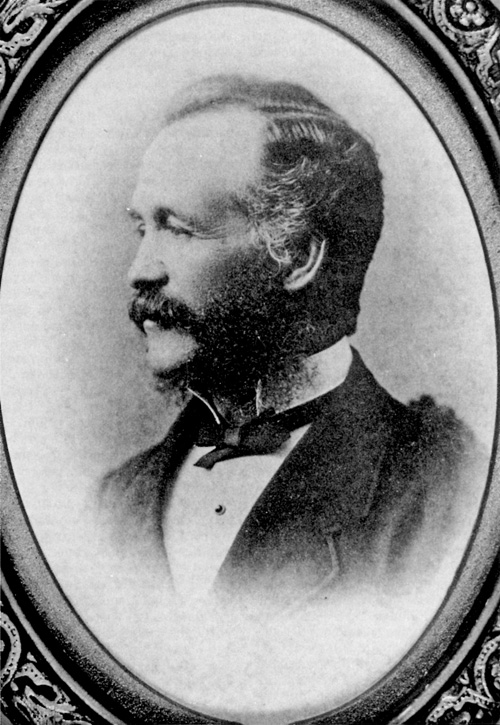
2 The Honourable Matthew Henry Cochrane, 1823-1903.
(Glenbow-Alberta Institute.)
|
Despite his business interests, Cochrane's preoccupation was with
agriculture; specifically, with animal husbandry. One is tempted to
speculate that the manufacture of boots and shoes and his directorships
were simply the vehicles by which he was enabled to earn sufficient
money to indulge his first love. In 1864 he returned to Compton, the
scene of his boyhood, and purchased a large farm adjoining the original
homestead. The farm "Hillhurst," eventually contained about 1,000 acres
of "largely rolling land, and almost in one block, with brooks and
springs, furnishing an abundance of good water."9 Having
thus acquired suitable land, Cochrane set about the purchase and
breeding of stock in such a manner as was to make him famous among his
contemporaries in Britain and the United States and earn him such
honours at home as a seat on the Quebec Council of Agriculture.
Up to this point, interest in scientific breeding had been sporadic
in Canada East and indeed in much of British North America. Shortly
after he acquired Hillhurst, Cochrane began to purchase good stock from
sources in Canada West. He soon recognized his need for an expert
stockman and this need was met in 1867 with the arrival at Hillhurst of
Simon Beattie. Beattie was a native of Dumfrieshire and nephew of James
Beattie of Newbie House, one of Scotland's leading breeders. He had
emigrated to Canada West in 1854, bringing with him a near priceless
knowledge of fine cattle and a keen sense of showmanship. Employed by
the Miller family of Markham, pioneer cattle breeders, he very shortly
began to make his mark in the Upper Canadian show ring and as early as
1855 could state confidently: "I would 'na carry a second or third
i' ma pooch."10
In 1867 Cochrane and Beattie launched into the big-time cattle world
with a major purchase of Shorthorns. This breed was in high favour in
the mid-19th century and within its ranks were two competing strains.
One line was descended from the experiments of Thomas Booth and his sons
who continued to control the best blood lines of their strain from the
family establishment at Warlaby, Yorkshire. The other line had been
developed by Thomas Bates and by the 1860s its standard-bearers were in
the custody of Sir Robert Gunter of Weatherbie Grange, York, England.
Rivalry between proponents of the two strains was keen and heated
debates were common wherever breeders gathered. Both Bates and Booth
stock soon suffered from the effects of this popularity and before too
many years passed declined from the effects of inbreeding, but when
Cochrane entered the market he did so just before the cattle boom of the
1870s hit. In this boom Shorthorns played a leading part as wealthy
speculators and cattle fanciers battled in the auction rooms for the
finest specimens of Bates and Booth blood.
Cochrane's first major purchase was the cow "Rosedale," called by
some the "Queen of Cows," who had no peer in the British prize
rings.11 At the same time, he bought the bull "Baron Booth of
Lancaster," of whom it is said he "marked the turning point in the
evolution of the ideal animal sought by a majority of breeders of
Shorthorn cattle through out the Western States."12 The two
animals were acknowledged as being among the finest cattle of their day
and created a sensation wherever they were exhibited.
The following year Cochrane imported the cow "Duchess 97th" from Sir
Robert Gunter, paying 1,000 guineas, at that time the highest price ever
paid for a Shorthorn cow. This was only the beginning and over the next
decade or so Cochrane speculated in the most fashionable pedigreed
strains. The combination of his own and Simon Beattie's judgement, and
the courage to invest large sums of money in the best stock paid off
handsomely. At the beginning of the 1880s he paid Sir Robert Gunter the
almost incredible sum of $30,000 for the "10th Duchess of Airdrie" and
three or four of her daughters, but within six years he had sold
$200,000 worth of descendants from these cows.13
As a measure of ability, not only in acquiring fine stock but also in
disposing of it in the most advantageous fashion, the sale arranged by
Cochrane at Bowness on Lake Windermere, Cumberland, was a classic. The
auction, held 4 September 1877, caused tremendous excitement in the
British livestock world because the senator had shrewdly offered some of
the finest of the Bates and Booth strains. This tactic had the desired
effect of attracting the leading breeders of both lines, generating
considerable publicity, and gaining record prices for the stock.
The Isis of Wetherby and the Orisis of Warlaby were raised,
through the zeal of a Canadian, to a parallel of niches in the
temple of fortune. The offerings of their votaries
redoubled, and the Short-Horn world fell down and worshipped the
golden calves which Cochrane, the king of importers, set
up.14
The effect of the senator's importations was equally impressive in
the United States and the blood lines introduced by him played a
leading, and for him a profitable, part in the rebuilding of the
American beef industry following the shattering effects of the Civil
War.
Clearly, one of the reasons for Cochrane's involvement in the
livestock world was the fact that for a man with his ability and capital
it was a remunerative business indeed and the cattle he bought and sold
were not pets. Nevertheless, profit was not his sole motivation.
M. H. Cochrane had been a business man and was not afraid to enter
into a large deal; but he fairly revelled in buying and selling livestock,
and perhaps got more pleasure out of seeing the cattle he
imported win prizes for the people he sold them to than he did out of
any other business he carried on.15
Cochrane's stock-breeding interests continued throughout the
remainder of his life and included investments in the American ranching
industry in which he made handsome profits.16 Over the 40
years or so during which he was engaged in this activity, it is
estimated that he handled some 2,500 head of pedigreed Shorthorns and
over 1,000 head each of Herefords and Aberdeen Angus
cattle.17 In later years he branched out into thoroughbred
horses and in this proved equally successful. One of his objectives in
entering the business of ranching in the Northwest was the establishment
of "mass produced" beef of high quality. In this he was eminently
successful, the Cochrane ranch being noted for its fine stock,
particularly after its transfer to the southern range.
The senator's private life was, by all accounts, exemplary. While in
Massachusetts he met and in 1849 married Miss Cynthia Maria Whitney, a
direct descendant of Eli Whitney. They had nine children, three boys and
six girls. The eldest was James Arthur, followed by William Edward and
then by Ernest Balch. All three sons were involved with the ranching
operation in some fashion: James as a director, though his real
interests lay in Hillhurst, and William and Ernest on the actual site.
The girls, Ermina, Alice, Eleanor, Mabel, Lillian and Bertha, had little
to do with ranching, but Eleanor married E. A. Baynes of Montreal and
for a time lived in Calgary where Baynes was involved, not very
successfully, in ranching both on his own and his father-in-law's
accounts. (Between September 1883 and June 1884, Baynes also set himself
up as a barrister and notary, then became general manager of the Mount
Royal Ranche Company.18) All but the two youngest girls
married and of these two, Bertha joined the Anglican order of the
Society of Saint John the Divine. From James's marriage in 1887 to Mary
Louise Grant, daughter of Sir James Grant, is descended the present and
only direct line of descent, neither William nor Ernest having any
family.
The Cochranes lived at Hillhurst despite the senator's many business
and political interests in Montreal and Ottawa, and it was a busy place
for the fame of the Cochrane herd drew many visitors. Mrs. Cochrane, who
was a quiet, devout lady, disliked entertaining and so devoted her time
to housewifely duties and raising her large family. Social affairs were
left in the hands of Mrs. Charlotte Roby, the senator's widowed
sister.
Cochrane would appear to have had connections with the CPR syndicate
in Montreal, so it is not surprising that when the George Stevens-Donald
Smith group received the contract to build the transcontinental railway,
he was either persuaded by them, or was quite ready on his own, to
investigate cattle ranching prospects. Though other associates took part
in the enterprise, Cochrane was the principal shareholder and its heart
and soul. He negotiated leases and regulations with the government,
imported cattle, hired staff and, most importantly, supplied both money
and enthusiasm during the difficult years of heavy losses. After his
death the Cochrane ranch lost its driving force. Although still a
profitable operation, it was sold in 1905, its cattle dispersed and its
range given over to cultivation.
Cochrane died on 12 August 1903. It would have pleased him to know
that he was remembered for his contribution to agriculture. The Montreal
Gazette eulogized, "He was the pioneer in that field of industry
and everything that has since been achieved was largely due to him." "He
will be longest remembered by his efforts to improve the standard of
Canadian cattle. In this his enterprise and energy was most marked, and
the effects may be seen on all sides."19 It is a measure of
the esteem in which he was held that the Grand Trunk Railway attached a
special car to the morning train on the day of his funeral in Compton to
accommodate those who wished to attend.
James Cochrane
If, as is sometimes suggested, a father directs his son into the
career he would have preferred for himself, then the senator's eldest
son James clearly reflects this in his preference for agriculture over
business. James was born in 1853 at Lowell, Massachusetts, and followed
the normal educational pattern until he reached college age. He then
took a degree in agriculture at Cornell University, New York, and
followed this up with postgraduate work at the Royal Agricultural
College, Cirencester, England. Early in the 1880s he took over the
management of Hillhurst, leaving the senator free to develop his
ranching interests. Although he was a director of the Cochrane ranch,
visited it frequently and took some part in the management of its
affairs, his main interest centred on Hillhurst. During his lifetime
James served as president of the Eastern Townships Agricultural
Association and as mayor of Compton, Quebec. He was also a director of
Bishop's College School and a delegate to the Anglican Synod. After the
senator's death, he seems to have withdrawn from both farming and
ranching, selling both Hillhurst and the ranch. He moved with his family
to Lennoxville, then in the 1920s to Westmount, where he died in
1933.20
Dr. Duncan McEachran
Closely associated with the establishment and the first few years of
operation of the Cochrane Ranche Company was Dr. Duncan McEachran who,
as mentioned above, was one of the leading veterinarians of the day. The
exact history of his relationship with the Cochrane ranch becomes rather
cloudy after a few years. Officially he was resident general manager of
the company and he and the senator both invested equally to the extent
of 1,000 shares each, but he spent little time on the ranch, the actual
day-to-day operations being left to the local manager. In 1883, after he
became manager and vice-president of Sir John Walrond's operation, the
Walrond ranch, he gave up his official connection with the Cochrane
ranch and by 1885 the number of shares he held in the latter
organization had dropped to 100.21 In 1884 he became, in
addition to his other interests, Dominion veterinarian, so it would not
be surprising if he withdrew from active participation in the affairs of
the Cochrane Ranche Company. It is even less surprising in view of a
history of disagreements between McEachran and other members of the
company.
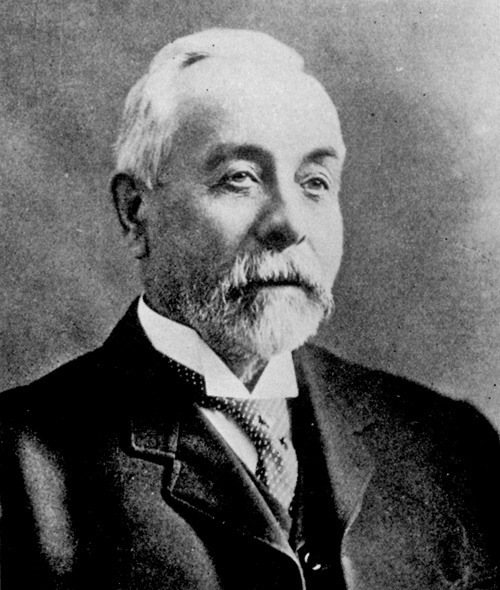
3 Dr. Duncan McEachran, FRCVS, 1841-1924.
(Public Archives of Canada.)
|
McEachran was born in Scotland in 1841 and received his education
there, graduating in 1862 from the Royal Dick Veterinary College,
Edinburgh.22 He immediately emigrated to Canada and settled
in Woodstock, Ontario. He was, at this early period, involved in the
foundation of the Ontario Veterinary College, but a difference of
opinion with Andrew Smith, the founder, cut short his participation. In
1865 he moved to Montreal where, with the assistance of Sir William
Dawson, principal of McGill, and Dr. George Campbell, dean of medicine
at McGill, he organized the Montreal Veterinary College. In 1875 he
built, at his own expense, a college building and at about the same time
entered into close co-operation with Dr. (later Sir) William Osler of
the McGill Medical School. This association was of tremendous
significance in view of the contributions to research in animal diseases
which were to arise from it. In 1889 the two men were successful in
having the Montreal Veterinary College incorporated into McGill
University as the "Faculty of Comparative Medicine and Veterinary
Science" and as such it functioned until 1903 when it was forced to
close for financial reasons. The closure was the result of McEachran's
rigid adherence to the highest possible standards which, while making it
perhaps the finest veterinary school of its day, also ensured small
attendance in an era of unlicensed schools when anybody could, and did,
open a "veterinary college." Studies at the college were integrated with
those of the McGill Faculty of Medicine on the assumption that human and
animal medicine were but two branches of the same art. Students of the
two disciplines took the same classes and wrote the same examinations,
where relevant. With an extra year of study, students in either field
could qualify for a degree in both professions.
Of even greater long-term significance for the stockman was
McEachran's position as initiator of Canada's quarantine system.
McEachran's principal failing was a lack of tact and diplomacy,
making it difficult for him to deal with those of lesser ability than
himself. Nor did he shrink from controversy of which there was no lack
in the sensitive post of chief veterinary inspector. Note has already
been made of the allegations of conflict of interest which were made
over the institution of stiff quarantine rules in 1884 and into this
sort of fray he entered with gusto. It is therefore a measure of his
recognized ability in a partisan age that his services were retained by
the Macdonald administration in 1878 and in turn by the Laurier
administration in 1896. He retired in 1902 and died at his home in
Ormstown, Eastern Townships, on 24 October 1924.
James Walker
Another leading participant in the venture was its first local
manager, James Walker, described prosaically in the charter of
incorporation as a farmer from Galt, Ontario. He was in fact one of the
formative influences in the early development of the Northwest, serving
with the North-West Mounted Police from its formation until he joined
the Cochrane Ranche Company in 1881. Firm
to the point of rigidity, fair and energetic, he was able to win the
confidence of the Indians and was one of those men instrumental in
establishing the reputation of the North-West Mounted Police among
them.
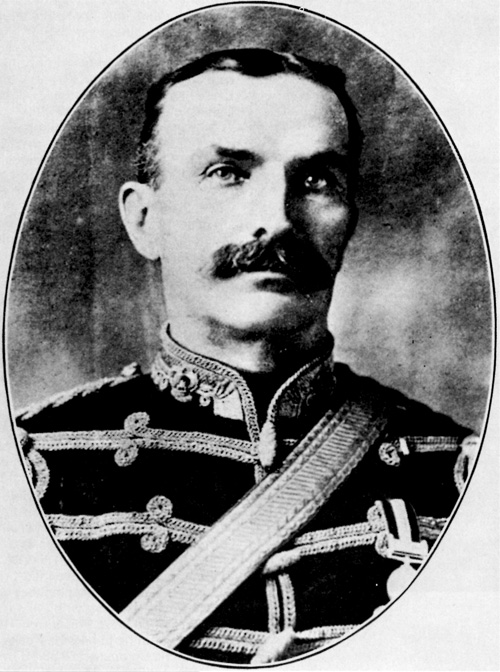
4 Superintendent James Walker, N-WMP, 1846-1936.
(Public Archives of Canada.)
|
Born in 1846 in Carluke, Ontario, Walker devoted much of his
youthful energy to the militia and saw service against the Fenians in 1866
and 1870. He was appointed sub-inspector in the North-West Mounted
Police at its inception in 1873. In 1881 he retired from the force with
the rank of superintendent to take the position of manager of the
Cochrane Ranche Company, but two years of stock losses, part of which
were due to his strict adherence to inappropriate directives from the
eastern directors, persuaded him that this was not his field. On
retiring, his financial investment in the ranch company was redeemed by
the acquisition of the company sawmill, whose ownership launched him on
a prosperous career in lumbering, ranching and real estate. As one of
the original inhabitants of Calgary and as a continuing resident, he
gradually assumed the mantle of "Grand Old Man" of the City of Calgary,
dying in 1936 full of age and honour.23
John Milne Browning
John Milne Browning of Longueuil, Quebec, was the business manager of
the company and one of Quebec's leading estate agents. He had for years
managed the holdings of the Right Honourable Edward Ellice, including
the seigneury of Beauharnois, and in 1881 was still the agent as well
as one of the proprietors of
that property. His interests in agriculture were extensive. He had
begun farming about 1863, was one of the original appointees on the
Quebec Council of Agriculture on which Senator Cochrane also served and
was for some years its president. He served as business manager for
the ranch company until his departure in the spring of 1888 for British
Columbia where he undertook the management of the affairs of a real
estate syndicate in which the CPR had interests.24 He was
succeeded as business manager of the ranch by the firm of P. S. Ross and
Sons, a concern which still is active in the management consultant
field.
The Honourable A. W. Ogilvie
Though not all were directors of the ranch company, other leading
Montreal merchants took an interest in this new western venture or in
its subsequent off-shoot, the British American Ranche Company. Principal
among these was Alexander Walker Ogilvie who in 1852 had gone into the
flour-milling business. Two years later he founded the milling firm of
A. W. Ogilvie and Company which pioneered the use of the wheat grown in
the Northwest. Of even greater significance, the firm introduced into
Canada the "Hungarian process" of milling that made it possible for
mills to handle the vast quantities of grain being produced as a result
of the introduction of farm machinery and the exploitation of the
prairie wheat lands. He retired in 1874 and devoted his life to politics
though he retained many of his business interests. A Conservative, he
began as a Montreal alderman and graduated to the legislative assembly
where he sat from 1867 to 1878 with an interregnum from 1871 to 1875.
His business interests were wide: president, Western Loan and Trust
Company; vice-president, Montreal Loan and Mortgage Company, Sun Life
Insurance Company of Canada, and Dominion Burglary and Guarantee
Company, and director, Federal Telephone Company. His services to
business and the Conservative Party were recognized in 1881 when he was
appointed to the Senate.25
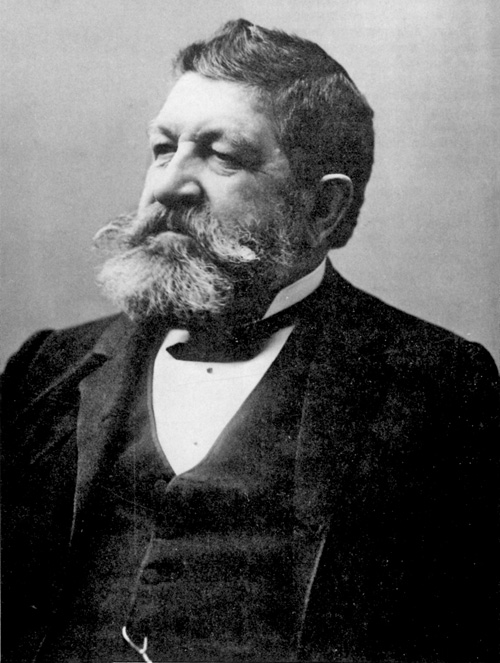
5 The Honourable Alexander Walker Ogilvie, 1829-1902.
(Public Archives of Canada.)
|
Charles Cassils
Charles Cassils, born in Scotland, was a member of the firm of
Cochrane, Cassils and Company. A leading member of the Montreal business
community, he was involved with or a director of Carnegie Steel
Corporation, Dominion Transport Company, Bell Telephone Company, Wire
and Cable Company and the Windsor Hotel Company. Outside the business
world he was at various times president of the Saint Andrew's Society,
a governor of the Montreal General Hospital and the Alexander Hospital,
and president of the Montreal Philharmonic Society. He was, in addition, a
Conservative and a Presbyterian. In 1876 he married Ermina Maria Cochrane, the
senator's daughter.26
William Cassils
A second member of the Cassils family, William, an elder brother of
Charles, was equally representative of the Montreal business community.
He was heavily involved in transport and communications including the
presidency of the Canada Central Railway, the Dominion Transport
Company, and the Federal Telephone Company. He had also at one point
been involved in the manufacture of "hoop skirts and fancy goods" as a
member of the firm of Cassils and Cameron.27
Other Capitalists
William Ewing, a shareholder, was a member of the firm of Ewing
Brothers, seed merchants and florists, and importers of garden, farm
and flower seeds.28
William Lawrence was probably connected with the firm of Perry Davis
and Son and Lawrence, dealers in wholesale proprietary medicines and
toilet goods.
The merchant class was further represented by Hugh Mackay of Mackay
Brothers, wholesale dry goods, just a few doors down McGill Street from
Ewing Brothers.29
A later shareholder, and by 1885 a director, was the Honourable
(later Sir) George A. Drummond, manufacturer, financier, Conservative
senator, vice-president (later president) of the Bank of Montreal, and a
prominent figure in Canadian economic life. Drummond had a further
qualification which would make him eligible for membership in this
select group. Like McEachran and the Cassils, he was a Scottish
immigrant, arriving in Canada in 1854. He was actively involved in the
affairs of the Cochrane Ranche Company as early as March 1884 and
probably earlier.30
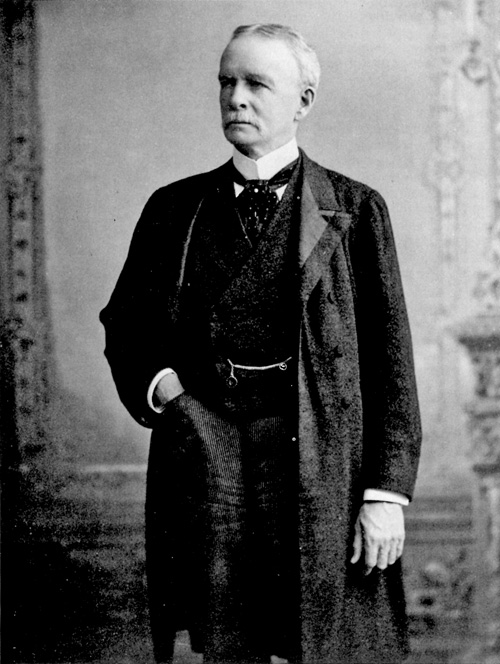
6 The Honourable George Alexander Drummond, 1829-1910.
(Public Archives of Canada.)
|
A late shareholder in the Cochrane Ranche Company was Edward Towle
Brooks, Conservative member of Parliament for Sherbrooke from 1872 until
1882, when he was appointed judge of the Superior Court of the District
of St. Francis. A participant with Cochrane in the ranching movement
from the beginning via the Eastern Townships Ranche Company (of which
more later), he had as well all the proper connections: solicitor for
the Eastern Townships Bank, vice-president of the International Railway
and of the Waterloo and Magog Railway, president of the Sherbrooke Rifle
Association, the Fish and Game Protection Society and the Ploughman's
Association, and trustee of Bishop's College School, Lennoxville. In
lieu of a Montreal-Scots background he represented the other option, the
New England-Eastern Townships inheritance, and he received his college
education (BA and MA) at Dartmouth College, New
Hampshire.31
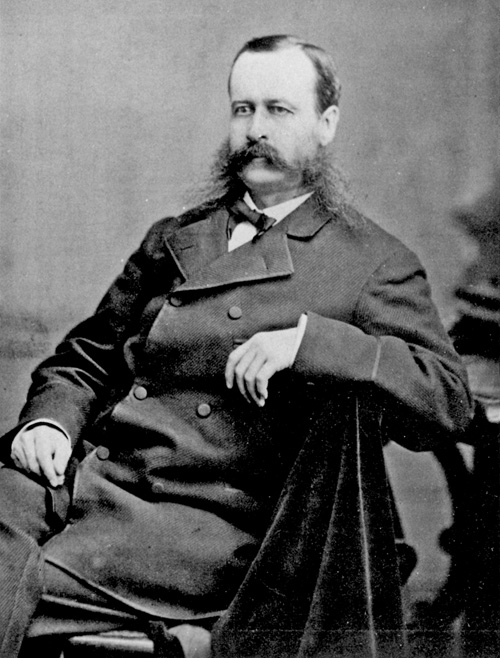
7 Edward Towle Brooks, MP, 1830-97.
(Public Archives of Canada.)
|
Louis Huet Massue was also a latecomer among the shareholders. He was
the seigneur of Trinité and St. Michel, a farmer at Varennes, president
of the Quebec Council of Agriculture, director of the Provident Mutual
Association of Canada and Conservative member of Parliament for
Richelieu, 1878-87.32 Massue's French-Canadian background
made him an odd man out among the other shareholders, but his
qualifications fitted the requirements exactly and evidently proved
adequate.
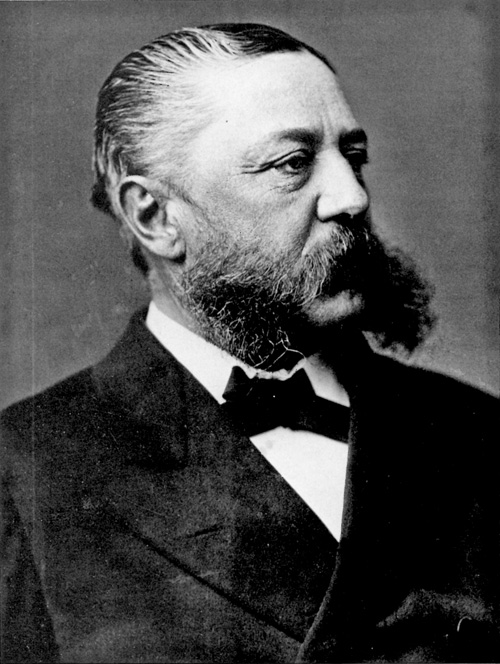
8 Louis Huet Massue, MP, 1928-91.
(Public Archives of Canada.)
|
One name which appears in an 1885 list of shareholders is that of
James Gibb. He may indeed have been very early involved with the company
as a "Mr. Gibb" is noted as one of the initial investors by Dr. McGregor
of the Marquis of Lorne's party. Precise identification of this
shareholder is, however, difficult. If the McGregor reference is to the
James Gibb of 1885, he was not a member of Parliament or senator as
there were none of that name at that date. He may have been James Duncan
Gibb, prominent in the firm of Gibb and Company, Merchant Tailors and
Haberdashers, an old established Montreal firm dating from 1775. There
was also a James Robertson Gibb, advocate, who lived in Montreal from
1880 to 1885. On the other hand, the Honourable T. N. Gibbs, cabinet
minister and senator, is among those promised leases in May 1881 and
though he lived in Oshawa, he was born in Terrebonne, Quebec, and held
numerous directorships. His death in 1883 removes him from the field
after that date,33 but shares may have remained in the
family.
There was at least one other prominent investor who, although he does
not at first fit into the Montreal-Eastern Townships commercial
political clique, does have a valid carte d'entrée. This was John
Philip Wiser, Liberal MP for Grenville South. His community of interest
with Cochrane becomes obvious once his background and business
affiliations are known. An American by birth, he had come to Canada in
1857 to manage Egert and Averell's distillery at Prescott. In 1862 he
bought out his employers, setting up J. P. Wiser and Sons, Ltd., (which
company still prospers) and built it into the third-ranking distillery
in Canada. Having ensured his financial well-being, he now began, like
Cochrane, to indulge what must surely have been his personal preference,
breeding quality livestock. In Wiser's case his business and personal
interests dovetailed to a remarkable degree. He was the president of the
Prescott Elevator Company which supplied grain for the J. P. Wiser and
Sons distillery, the mash from which fattened a thousand head of cattle
a year on his stock farm outside Prescott. These cattle were then
shipped to the Montreal Stockyards Company, of which he was a director,
and from thence no doubt transported out to ocean steamships via the
Montreal Lighterage Company, of which he was also a director. He was
also, in 1880, a member of the Ontario Agricultural Commission. Although
an Ontario resident, he was well inside the orbit of the Montreal
financial community.
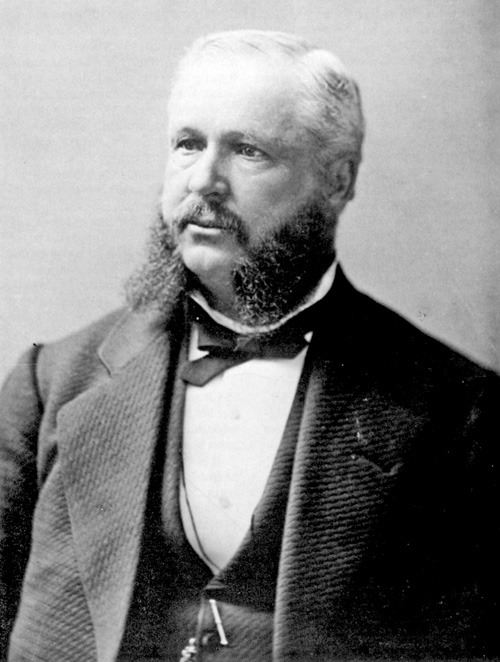
9 John Philip Wiser, MP, 1825-1911.
(Public Archives of Canada.)
|
Wiser's first love was evidently horses for the farm itself was named
"Rysdyke" in honour of a prize stallion for which he had paid $10,000.
His Hambletonian trotters were among the finest in
Canada.34
Thus far it is apparent that Wiser and Cochrane had much in common,
but Wiser's connections with the ranching industry were even closer and
were eventually to make the Cochrane operations seem insignificant. In
the 1880s he became president of the Dominion Cattle Company in which
Cochrane was also involved and which operated on 1.75 million acres in
the Texas panhandle. Privately, he owned two other ranches in Kansas
where stock was fattened for the Kansas City and Chicago
market.35
It has not been possible to clarify Wiser's exact connection with the
Cochrane Ranche Company. He and the senator worked closely to obtain
adjoining leases and as late as May 1881 his name is among those
virtually promised a lease,36 but for some as yet unknown
reason the association here progressed no further.
The possibility also exists that Major General Thomas Bland Strange
was an early shareholder. Strange was an ex-imperial officer, founder
and first commander of the 1st Garrison of Canadian Artillery, one of
the permanent units of the Canadian Army established to replace imperial
troops withdrawn in 1871, and he was to command the Alberta Field Force
in 1885 during the rebellion of that year. In 1881 he left military life
and established a ranch, the Military Colonization Company.37
The supposition that he may have had shares in the Cochrane Ranche
Company is based on a remark made by him to Sir John A. Macdonald in a
letter of March 1882. Strange states that he will shortly be going up to
his lease with the senator's son. In closing he adds, "I have an
interest in the Cochrane Ranche Company."38 This slim
evidence is inserted here principally because the general is an historic
figure in his own right and any possibility of his connection with the
Cochrane ranch is worth noting. If there were any substance to this it
did not last long, for Cochrane's initial resistance to sheep grazing
and his successful lobby against it which resulted in the banning of
sheep ran directly counter to Strange's plans. As a result,
relationships between the two were cool and any connection would have
been short-lived.
It is worth remarking, as evidence of the closeness of the Montreal
coterie of investors, that Mackay, Ogilvie and Lawrence all resided
at area of large estates and fashionable homes, including that of Donald
Smith, one of the builders of the CPR who lived at 1157 Dorchester,
directly opposite.39
This list can scarcely be said to be a comprehensive one of all
investors, company officers or shareholders for no such record has
survived. It has been compiled from chance references in letters,
diaries and government files and this has obvious limitations. It is
nevertheless evident that the Montreal business community did not limit
their efforts to control the economy of the Northwest to such major
enterprises as banks and railways, but actively promoted small-scale
activities as well, an observation born out by a glance at issues of the
Canada Gazette for the early years of the 1880s which contain
petitions for Letters Patent of Incorporation. The number of letters
involving enterprises in the Northwest indicates a very considerable
interest in the economic potential of that area; the large proportion of
the new companies based in either Montreal or Toronto reflects the
longstanding rivalry between those two centres for economic control of
the Northwest.
|

